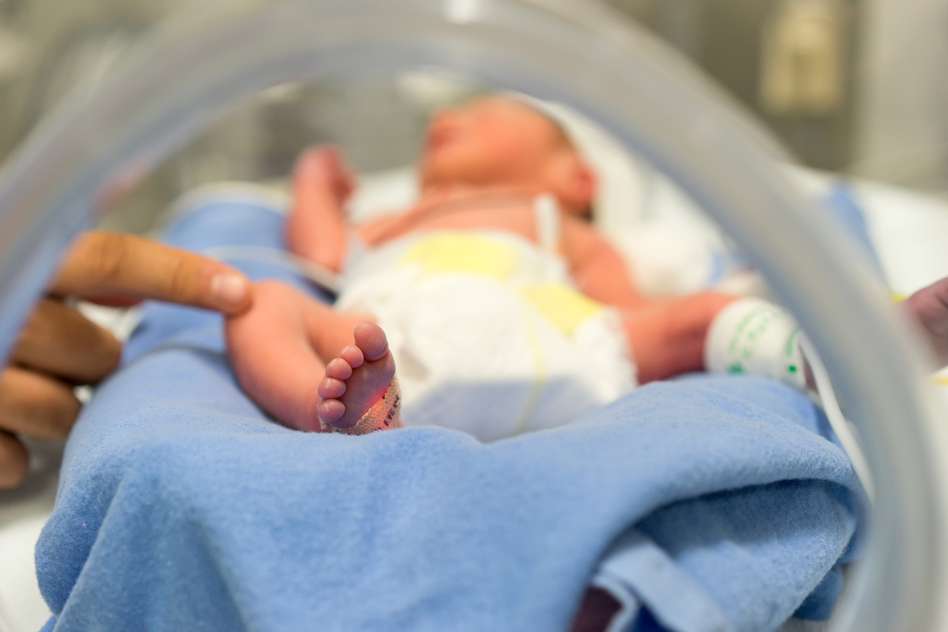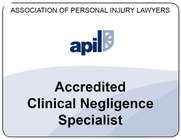medical negligence
Maternity safety in England: government response out but how significant are the recommendations?

The government has now published its response to the Report. In headline terms, the Government:
- is considering the committee’s recommendation that the maternity budget be increased by £250m - £300m with immediate effect;
- has acknowledged the importance of safe staffing levels and appropriate training; and
- has advised that they will be consulting on a wider legal reform of both the process and how compensation is calculated.
There are a number of areas where recommendations have been accepted “in part”.
It is encouraging to see that the Government has, with immediate effect, abolished the use of caesarean section rates to penalise trusts, instead focussing on the use of the Robson criteria to measure caesarean rates more effectively. It is to be hoped that women will now be empowered to make the right decision for them and their baby, with the focus on safe delivery, rather than what culturally in some hospitals has still been termed a “normal” delivery.
It will be interesting to see what action is now taken by the Government in relation to progress those recommendations accepted, or accepted “in part”. Actions speak louder than words.
Ahead of the Government’s response to the 2021 report published by the Health and Social Care Select Committee into the Safety of Maternity Services in England, Janine Collier, Partner and Head of Clinical Negligence at Tees Law highlights why lessons are not being learned and identifies the urgent need for improvements in above all else, funding, culture and communication.
With around 700,000 babies being born each year, giving birth is the most common reason for admission to hospital in England.
The vast majority of maternity care is excellent, but when things go wrong, it can result in serious, life-changing, life-long injuries for babies; still births; neonatal deaths; or maternal deaths. Not only is this a tragedy for the family, but it is also upsetting for clinicians and, when litigation ensues, costly for the NHS.
Back in 2015, the government launched the National Maternity Ambition to reduce the rate of stillbirths, brain injuries, neonatal deaths and maternal deaths in England by 50%.
Since then, patient safety has improved, with a 30% reduction in neonatal deaths and a 25% reduction in still births, but England remains far behind the likes of Sweden and whilst progress in these areas is welcomed, there has been little progress towards reducing pre-term births, brain injuries or maternal deaths.
As someone who witnesses the impact that substandard maternity care has on patients and their families every day, and, as a taxpayer who foots the bill when things do go wrong, it is both heart-breaking and hugely frustrating to see reports of the Shrewsbury and Telford Hospitals NHS Trust maternity scandal (more than 40 babies died because of a culture that denied women choice and subjected hundreds of families to unsafe care); the death of baby Harry Richford who died after a catalogue of errors by maternity staff and concerns about the quality and outcomes of maternity and neonatal care at East Kent Hospitals University NHS Foundation Trust; and most recently to hear that dozens of babies have died or been left with brain injury in the Nottingham maternity units accused of bad care and neglect.
The lessons identified from the Morecambe Bay investigations in 2014 - poor levels of clinical competence, dysfunctional teams, a determination among midwives to pursue ‘normal’ childbirth at any cost, poor quality investigations, without learnings taking place and a defensive culture - have clearly not been learned.
What are the key areas addressed in the report?
Why are lessons not being learned?
Issues that need to be addressed
What is different about this report and its recommendations?
What are the key areas addressed in the report?
The Committee Report focuses on three areas:
- Staffing numbers and funding, leadership and training
- Learning from patient safety incidents, including investigations and the current medical negligence system
- Women’s experience of care and the changes needed to ensure safe care is a reality for every mother and her baby
Why are lessons not being learned?
The need to improve funding, culture and communication pervade the report. So why are lessons not being learned?
This demands a change in workplace culture, a positive patient safety culture, an openness to learning, psychological safety for staff, teamwork and leadership. The NHS Patient Safety Strategy launched in 2019 with this aim, but culture change takes time and this is far from embedded across the NHS.
In a healthy workplace with a learning culture where psychological safety is embedded, complaints, litigation, or any other form of investigation should be welcomed as an opportunity to reflect, analyse, learn and improve. Alarmingly, there is evidence that this is not the case – rather there was a tendency for employers to say “who is to blame here?”
Issues that need to be addressed
There are a number of issues that need to be addressed in order to bring about much-needed improvements in maternity services:
- Complaints should be independently investigated and families should be compassionately engaged with and meaningfully involved throughout
We see progress in that the Healthcare Safety Investigation Branch (HSIB) has replaced the former local Trust Serious Incident Investigations to investigate certain maternity events including stillbirths, early neonatal deaths, severe brain injuries for babies delivered at term and maternal deaths. The quality of investigations has improved in a number of respects: not only are families more involved and the investigation independent, but the quality of the reports and recommendations are far superior.
However disappointingly, some Trusts do not own recommendations made locally and fail to maximise learning at the local level.
- Effective communication and dissemination of learning must be an essential component of a patient safety culture
Healthcare professionals (barring the rogue exceptions) want to provide a good patient experience and safe and effective care. And yet, front-line clinicians are sometimes unaware of the investigations, are not kept up to date and do not know the outcome.
This is profoundly disempowering, disengaging and limits opportunities to learn and change. Reports should be shared with every person who had involvement with that particular patient’s care to ensure valuable learning. Why on earth would you not?
- Maternity services have been subject to chronic underfunding
Astonishingly, Trust Boards often refuse to fund the necessary midwifery posts to meet accepted safe levels of midwifery staffing. When 40% of all claim payments (£2.3 billion in 2020/2021) relate to maternity care, why would a Board not agree to fund safe levels of staffing? Is it because the right arm is not talking to the left? Are budgets restricted?
The Committee Report recommends that the budget for maternity services be increased by £200 - £350m per annum with immediate effect to facilitate safe staffing levels.
If funding safe staffing levels reduces the number of avoidable brain injuries suffered by just 10-15%, the investment would pay for itself before even beginning to think about the human cost saved.
Seems pretty straighforward, or is it? Whilst the increased funding would be welcome, it is unrealistic to expect that the NHS will be able to fill all vacant and fully-funded posts.
There are 844 vacant but funded midwifery posts and even if adequate funding were in place, there is a widespread shortage of midwives (1,932), it is estimated that there is a shortfall of around 496 consultants working in Obstetrics and Gynaecology and a workforce gap of around 1,054 anaesthetists.
It is not possible to “wave a magic wand” such that midwives and doctors appear from thin air. This will require a sustained programme of investment in education and training. Even then, as trainees arrive on the ward, they require mentoring and supervision and yet mentors are already over-stretched with their own clinical duties. Inadequate staffing is not a problem that can be solved overnight by money alone.
- Staffing shortfalls in maternity services have a knock-on effect on the ability to implement other patient safety initiatives, such as the accessibility of training
Whilst the money is there to deliver the training, it is difficult to access - training requests are often denied and those delivering the training sometimes have to cancel last minute as front-line services are prioritised.
Funding for training must be ringfenced and be sufficient not just to cover the provision of training, but the provision of backfill to ensure that staff are able to both provide and attend training – however, this takes us full circle back to the fact that, even if fully funded, as a country there are insufficient midwives and doctors to provide a safe level of maternity care.
- Staff need to be given time to have meaningful communication with the patient
As they work additional hours to fill rota gaps and work even harder during their own short-staffed shifts, women report that midwives often appear “harassed and overworked”. On average around 5-6 minutes is allowed per woman in a hospital-based antenatal clinic. How can this be sufficient to make time and space to educate women and families about their choices, the risks and benefits? Apart from discussing place of delivery, there should be discussions about mode of delivery and pain relief in labour.
Women should be empowered to make decisions that are right for them and their baby. Disturbingly, the Committee heard evidence that some Trusts are still placing pressure on women to have a “normal” birth, rather than a Caesarean, with emphasis on the mode of delivery, rather than achieving “a safe, healthy, positive experience of birth and to come home with a baby”. This is a culture frequently witnessed in medico-legal practice. Most notably, Nadine Montgomery was pressured towards a vaginal delivery when she requested a Caesarean section, and her son was severely injured during a traumatic birth.
Unacceptably, there are huge disparities and inequalities in outcome. Black women are four times more likely to die in pregnancy or childbirth, with women from Asian ethnic backgrounds facing twice the risk. Continuity of care has shown dramatically improved outcomes for mothers and babies, including a 16% reduction in neonatal mortality, 24% reduction in preterm birth as well as providing a better experience for mothers.
Despite this, continuity of care is an area where little progress has been made. So, once again, we have a report which highlights concerns about maternity safety.
What is different about this report and its recommendations and other reports, public inquiries, initiatives and programmes in recent years?
In reality, very little. The same barriers to delivering safe maternity care have been highlighted time and time again. We all know what the problems are and few, if any, would disagree that we all want to improve the safety of maternity services in England.
The million-dollar question is how? Transforming the culture in an institution the size of the NHS takes strong leadership, a clear and consistent vision, and a commitment to implementation. It takes collaboration between clinicians, management, patients, their families and others. It takes time. It takes resource. It takes laser sharp unremitting focus.
It remains to be seen whether rather than prioritise improving the safety of maternity care, the Government decides that it is, instead, easier to cut the financial cost of the devastating harm families suffer through other means, such as re-thinking the current approach to medical negligence, by restricting access to justice and/or reducing the compensation payable.
Call for a FREE initial consultation on 0800 013 1165
Tees is here to help
We have many specialist lawyers who are based in:
Cambridgeshire: Cambridge
Essex: Brentwood, Chelmsford, and Saffron Walden
Hertfordshire: Bishop's Stortford and Royston
But we can help you wherever you are in England and Wales.
Chat to the Author, Janine Collier
Executive Partner, Medical Negligence, Cambridge office
Meet Janine
- Areas of expertise
- Accreditations
- Testimonials
Legal 500 UK 2023
'Janine Collier has an amazing reputation and quite rightly, she very quickly spotted something that wasn’t the main focus of the case but is able to zoom out and look at everything that’s going on and spot things others wouldn’t spot. You can tell she really cares and is a very dedicated person who just wants to help. The team are all caring and efficient'
A
Cambridge
'A heartfelt thank you for all you have done in preparation for and during the settlement meeting, as well as for your unfailing support along the way, in and out of hours. It is undoubtedly due to your high professionalism if the outcome today has exceeded all expectations; it will be a huge help for us going forward and we will be forever grateful'
Chambers & Partners 2022
Cambridge
'Janine Collier is renowned for her handling of delay in diagnosis, obstetric injury and surgical negligence claims. She is at the top of her game and knows clinical negligence inside and out'
Susan Hickman
Cambridge
'We consider ourselves fortunate to have been recommended to Tees by the solicitor we initially approached. We did not realise it until the case was well established that the level of professional care we were receiving was exceptional and that the experience of the individuals and the contacts they have to assist in a very complex case was the best available. We are grateful that we received a satisfactory settlement as a result of their efforts under difficult circumstances and dealing with defendants that were obstructive and disorganised. By far the greatest benefit for us however is the fact that the victim, with assistance from highly skilled experts that we would not have known about otherwise, learned to walk short distances when all other medical opinion did not consider this possible. This was their greatest achievement which is well beyond the service we expected'
Legal 500 UK 2021
"Janine Collier, head of department, is a perspicacious and very able lawyer, certainly one of the best in the region and beyond, who believes in her team and in the work she does. A genuinely nice person who sees it as her clients’ right and her duty to achieve the best possible outcome for them. Janine delivers this time after time. She is an extremely intelligent and intuitive lawyer who has a genuine understanding of the difficulties and fears clients experience when living with an avoidable injury."
Legal 500 UK 2021
"Janine Collier is a really good solicitor – she really understands the medicine in clin neg cases and works well with the team, the clients and the experts to get excellent results in difficult cases."
Legal 500 UK 2021
"Janine Collier is exceptionally good at analysis, organisation and strategy."
Legal 500 UK 2021
"Janine Collier is a really good solicitor, she really understands the medicine in clinical negligence cases and works well with the team, the clients and the experts to get excellent results in difficult cases."
Legal 500 2021
"Janine Collier shows dedication to ensuring access to the highest level of experts on medical negligence cases. There is excellent consistent communication with experts throughout a lengthy case, creating a supportive working atmosphere and ensuring long-term engagement of expert. She has a very intelligent and insightful approach to learning from experts, enabling sharing of detailed specialist information and findings with confidence, and she is excellent in multi-professional meetings with solicitors and barristers, enhancing communication in exceptionally complex cases; very high level of sensitivity demonstrated towards the needs of client throughout the case, consistently focusing on the multifactorial needs of the client, over and above the monetary compensation."
Legal 500 UK 2021
"Janine Collier has been amazing to work with. She is always quick to respond to queries, always takes time to make sure we fully understand the process and supports us to make decisions, i.e. switching from Legal Aid to no-win no-fee, with well reasoned and researched information to support us."
Legal 500 UK 2021
‘It has always been a rewarding experience working with Janine Collier and I would commend her very highly to lead on medical negligence cases.‘
The Fisher family
Janine works with empathy, understanding and compassion. She handled our mother's inquest with skill and sensitivity and guided us expertly. She kept us informed continually via email and multiple meetings and phone calls. Janine completely took the sting and the stress out of our case.







